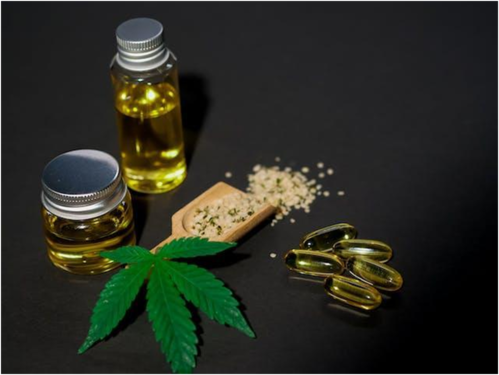Post-workout soreness is a common and often uncomfortable experience for many individuals who engage in physical activity. This soreness can vary in intensity and duration, depending on the individual and the type of exercise performed. It typically develops within a few hours after exercising and lasts several days. Some people describe the soreness as a deep muscle ache or stiffness. While it may be unpleasant, post-workout soreness is a natural response to exercise’s stress on the muscles. And while there is no cure for the soreness, light stretching and gentle exercise can help to alleviate discomfort and promote recovery.
Here Are The 6 Ways To Beat Post-Workout Soreness
1. Try Stretching
Post-workout soreness can hit hard, leaving you struggling with sore muscles for days after your workout. One simple yet effective solution to this discomfort is stretching. It’s an easy way to enhance your body’s recovery process and reduce the chances of future injury.
The good news is that you don’t need to be a yoga guru or professional athlete to stretch effectively. Simply incorporating a few basic stretches into your routine after your workout can have a significant impact on relieving soreness. Plus, stretching can help improve your flexibility and range of motion. So if you want to beat post-workout soreness, try stretching and feel the difference it can make in your body.
2. Drink Plenty Of Water
After a rigorous workout, soreness is an inevitable outcome. However, there’s no need to suffer longer than necessary – drinking enough water after exercising can help alleviate the discomfort. Sweating during our workout, we lose water, leading to dehydration. Drinking water replaces this lost fluid and helps soothe sore muscles, enabling them to recover faster. Keeping your body well-hydrated also allows your muscles to work at their best. So, remember to drink plenty of water before and after your workout to reduce soreness and increase comfort.
3. Take A Cold Shower
Taking a cold shower after a workout may not sound like the most inviting idea, but it can benefit your body. If you experience post-workout soreness, a cold shower can help alleviate some discomfort. But if you’re looking for a way to recover from a challenging workout, take the plunge and try a cold shower.
4. Use A Foam Roller
If you frequently engage in physical activity, you know how uncomfortable post-workout soreness can be. However, there is a solution that can help alleviate some of this discomfort: a foam roller.
This foam cylinder can massage and soothe sore muscles, increasing overall blood flow to the area and promoting a quicker recovery time. Foam rolling can be used on various muscle groups, from the legs and back to the arms and neck. It’s an easy addition to any stretching routine and doesn’t require additional equipment or expertise. So the next time you’re struggling with post-workout soreness, try a foam roller.
5. Use HHC Gummies
Post-workout soreness can be a real problem, both physically and mentally. Luckily, there may be a solution in the form of HHC Gummies. What sets HHC gummies apart is their natural blend of ingredients, which work together to provide relief without harsh chemicals or pharmaceuticals. So whether you’re a seasoned athlete or just starting your fitness journey, consider trying HHC gummies to help you beat post-workout soreness and feel your best.
6. Get A Massage
Post-workout soreness can be a real buzzkill, especially if you like to keep active. It can damper your daily routine and make even the simplest tasks feel like a herculean effort. Treating yourself to a massage is a great way to alleviate some of this discomfort!
By getting a gentle rubdown, your muscles can loosen up, blood flow can increase, and you’ll feel a sense of relaxation that can help you relax. Massages are great for athletes and non-athletes and can be tailored to your specific needs. So, if you’re feeling the ache of your last workout, why not book a massage and treat your body to some well-deserved TLC?
Things To Do Pre Work Out To Avoid Muscle Soreness
Before hitting the gym, taking a few steps is essential to prevent muscle soreness. First, warming up before your workout can increase blood flow and loosen up your muscles, reducing your risk of injury and soreness. Next, stay hydrated by drinking plenty of water before your workout.
Dehydration can cause muscle cramps and make it harder for your body to recover post-workout. Additionally, incorporating dynamic stretching into your warm-up routine can help prevent soreness by improving your flexibility and range of motion. Finally, consider using a foam roller or massage ball to target specific muscle groups and loosen any tightness or knots. By taking these simple steps, you can reach your full potential without worrying about feeling sore for days afterward.
Final Words
After a challenging workout, it’s common to experience muscle soreness for a day or two. Fortunately, several ways exist to alleviate the discomfort and return to your fitness routine. The first step is to stretch the affected muscles gently. You can also take a warm bath or shower to ease the tension. Another effective approach is using a foam roller or massage ball to pressure the sore areas. Stay hydrated and incorporate protein-rich foods into your diet to support muscle recovery. Finally, remember to gradually increase the intensity and duration of your workouts to prevent excessive soreness in the future. By incorporating these strategies, you can minimize post-workout soreness and continue progressing toward your wellness goals.




